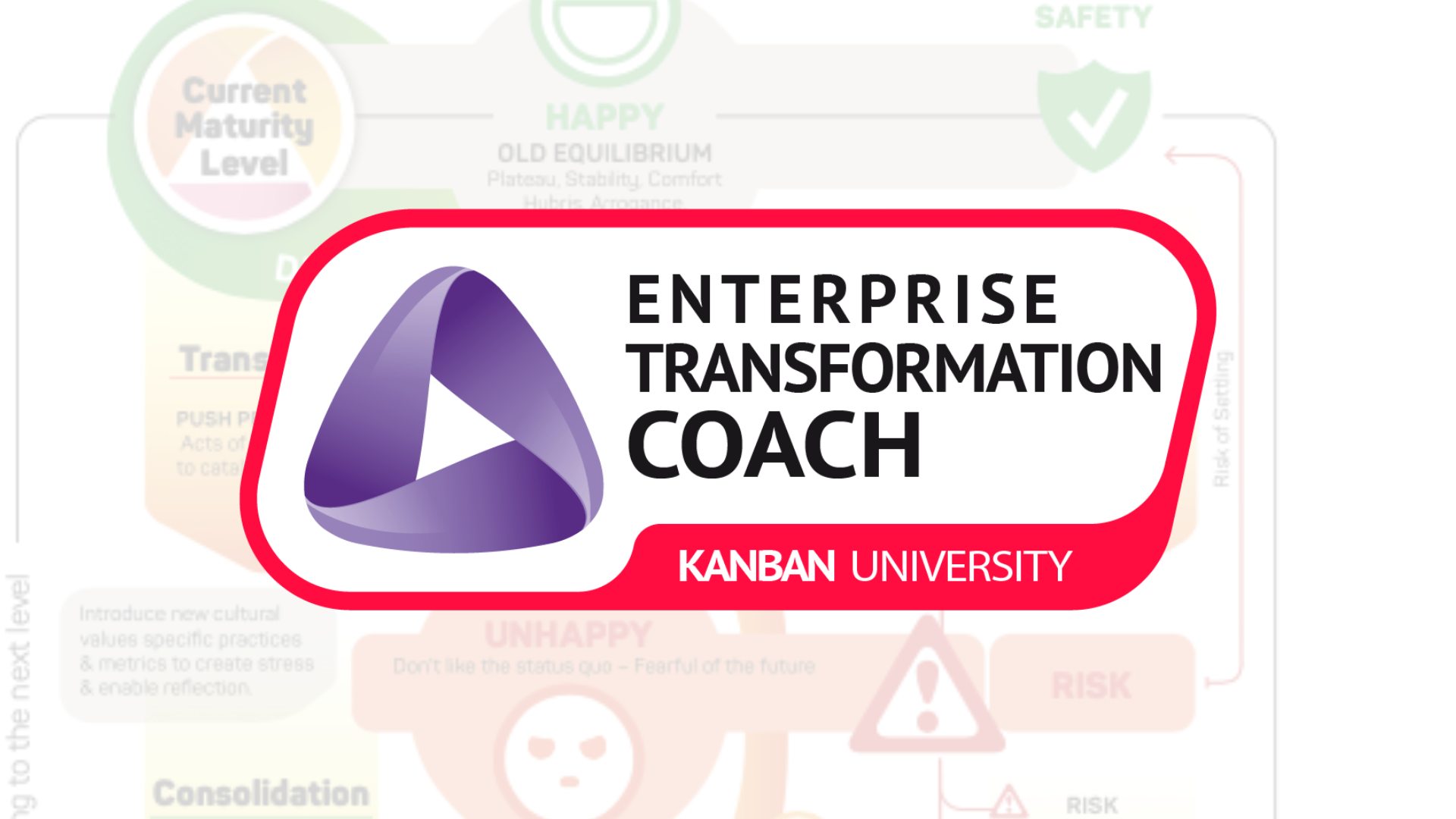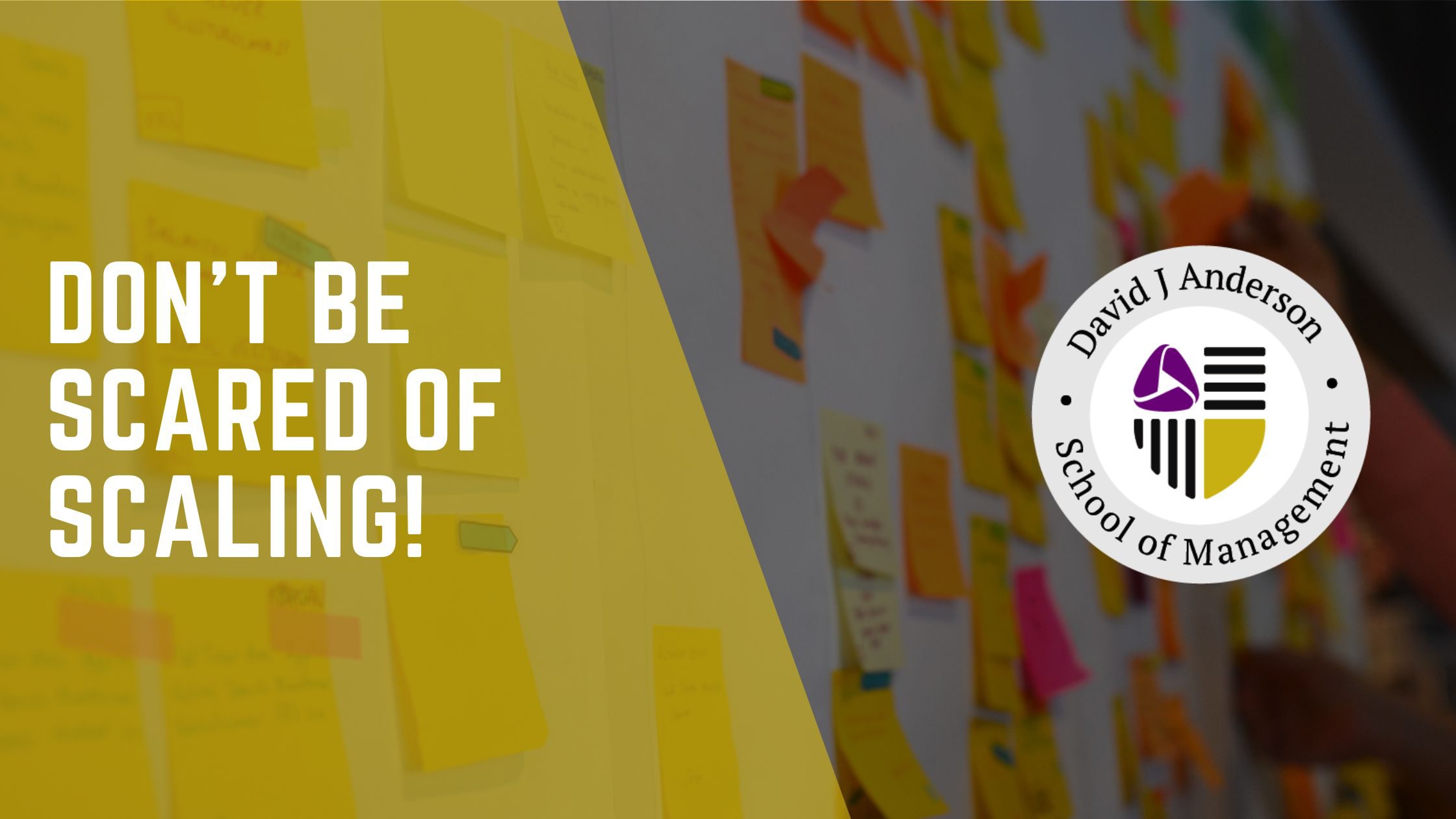3 Tips for Effective Scaling
Many businesses strive for large-scale agility but find themselves facing failed attempts with various frameworks.
Successful scale doesn’t come from installing a process framework!
Instead, it comes from building trust, avoiding mistakes and costly rework, improving quality, delegation, empowerment, and managing risk. How do we accomplish this? By increasing organizational maturity and thinking of your organization as a network of interdependent services.
With a few simple rules or policies along with a few relatively simple techniques, such as classifying the cost of delay qualitatively, we allow for autonomy. This means that the nodes in the network can operate independently with very little centralized control or overhead, enabling the enterprise to move quickly, exhibit agility, exploit opportunities, and show resilience. This enables an end-to-end service that is orchestrated and composed from existing services in the network, and new opportunities are exploited through improved cooperation and collaboration rather than expensive and painful reorganization and restructuring.
Take a look at the following three tips to help you effectively and efficiently scale Kanban across your organization.
1. Learn to Manage Dependencies Simply
Beyond a trivial scale of a single team, organizational design approaches to eliminate dependencies are ineffective. Attempts to design out dependencies tend to design in mediocrity. Dependencies in large-scale organizations and large-scale products or services, or products that aspire to be market leaders, are a fact of life. Instead of trying to eliminate dependencies, we need to learn to manage them elegantly and effectively.
To effectively manage dependencies while minimizing the economic and productivity impacts, one should use concepts such as:
- Demand shaping
- Capacity allocation
- Advanced forms of classes of service
- Risk-assessment techniques
- Strong triage capability that separates work into three categories—do it now; leave it until later but with a specific schedule; or choose not to do it at all
Read more about these techniques and our guidance on simplifying dependency management. (https://www.mauvisoft.com/2020/10/20/seven-lessons-about-dependency0management/).
These techniques will contribute to highly predictable outcomes and superior economic results.
2. Utilize the Power of the Kanban Maturity Model
The Kanban Maturity Model provides the basic principles of scaling any business activity. It provides actionable guidance focused on effective practices that enable better quality, demonstrate ways and means to ¨work yourself out of a job”, and improve organizational maturity. Use the model to understand where your organization is now, and the outcomes you want to reach and create a roadmap to improvement. This allows you to introduce change in an evolutionary way that is less likely to fail when compared to sudden, abrupt change.
3. Work Yourself Out of a Job
You cannot scale without free time; hence you need to work yourself out of a job. It’s important to learn the tools to delegate work, build trust, and empower people without losing control. By understanding the Leadership Maturity Model and leadership traits, you can identify leaders in your organization and set them up for success. This allows you to make sense of leadership actions and capabilities, understand motivation, and put decision-making in context. Organizational maturity will always be limited by leadership maturity and hence, organizations that seek great change and aspire to market-leading performance must develop the leaders who can take them there.
Learn More: Join Us for the Enterprise Scale Kanban Course
Interested in learning more about how to successfully scale Kanban across an organization? Check out our new Enterprise Scale Kanban course. Participants will learn how to:
- Be able to move quickly, exhibit agility, exploit opportunities, and show resilience
- Improve cooperation and collaboration rather than expensive and painful reorganization and restructuring
- Learn to manage your dependencies in a cost-effective manner with minimum impact on productivity
- Achieve an end-to-end workflow that increases speed and predictability
- Create highly predictable outcomes and superior economic results through proper risk management techniques
- Produce objectives and metrics to drive system-wide optimal behavior
- Be able to scale Kanban beyond a department to a whole business unit of up to tens of thousands of people
- Improve organizational maturity with pragmatic, actionable guidance based on the KMM





